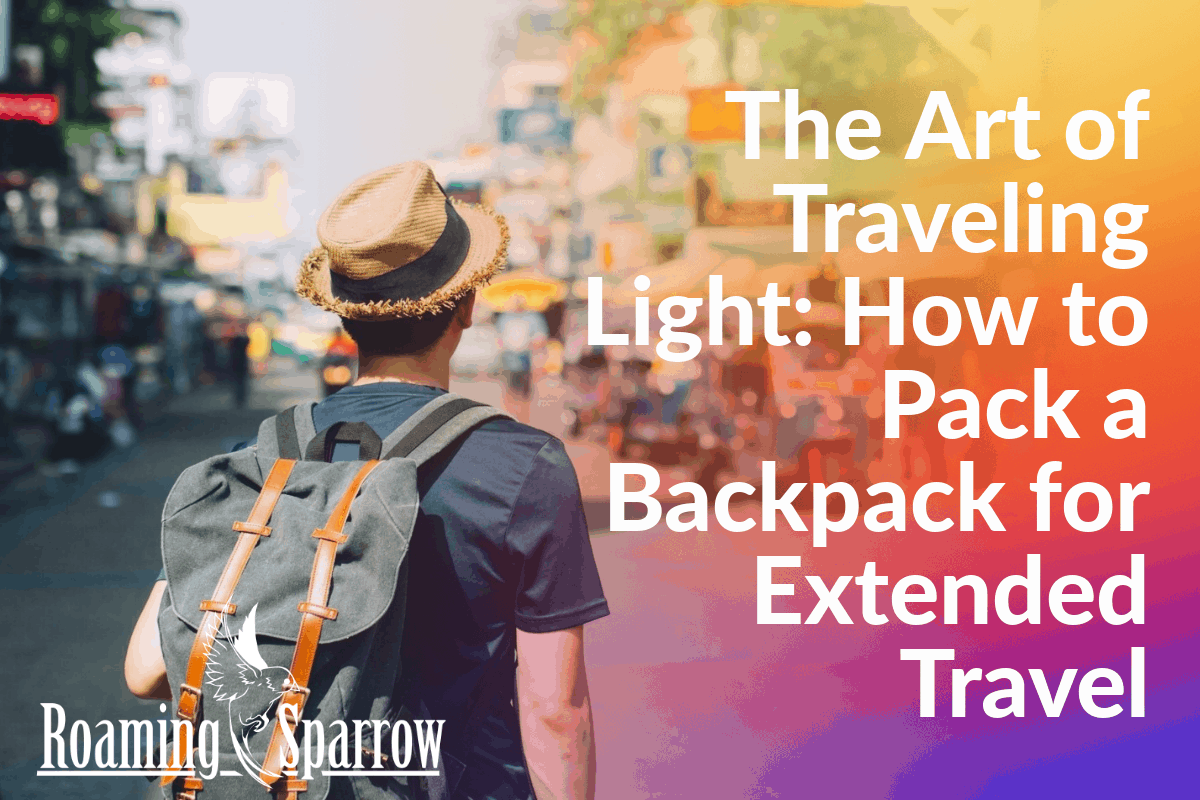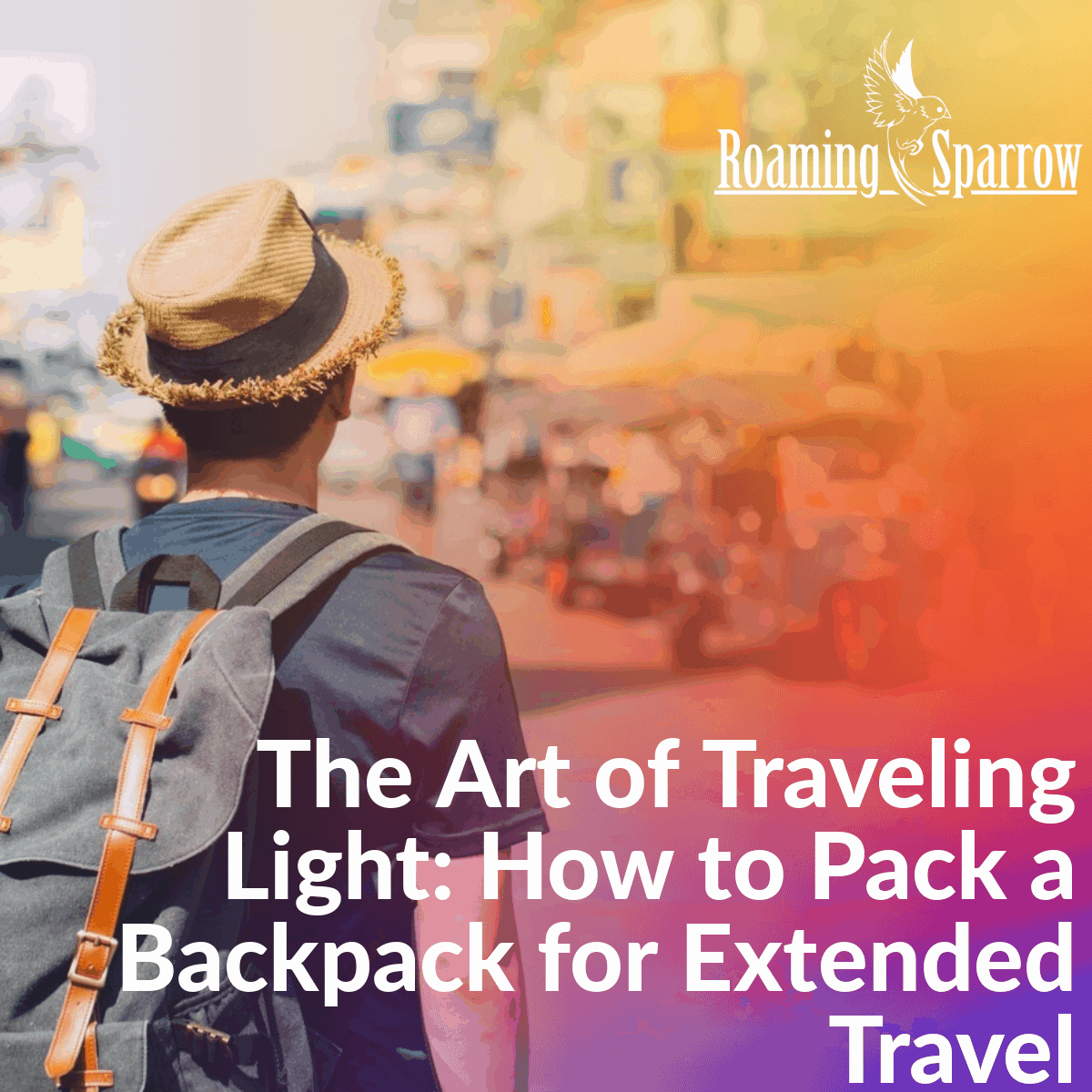The Art of Traveling Light: How to Pack a Backpack for Extended Travel

Packing light isn’t as easy as it sounds, but when done right, it makes traveling a more enjoyable experience. Instead of laboring around like a packed mule, you will be able to explore and experience your destination freely without an aching back.
In addition to that, a minimalistic approach to your belongings can help you save check-in fees at the airport and skip the long queues at the luggage claim.
It does sound great, but we humans can’t simply resist the temptation of overpacking. Those new to traveling are often the biggest culprits, lunging around with a backpack prepared for doomsday!
Keeping the weight down is crucial, and since a backpack has only one primary compartment, you must put things in the right place to make maximum use of the space. Do you want to be digging for your passport through a pile of clothes at the boarder check stop?
Whether you are traveling through the highlands of Sri Lanka or the Banana Pancake Trail, packing a light backpack is possible, and we are here to teach you how.
Read on for a comprehensive guide on how to correctly pack a backpack!
How to Pack a Backpack for Extended Travel : The right backpack is key!
You can’t make a good burrito if you don’t have a great tortilla! On the same vein, you can’t pack right if you don’t have the right backpack .
Most carry on backpacks have a capacity of 40L which is ideal for short journeys, but since we are talking long trips, a backpack of about 50-55L should suffice. Packs come in different varieties; some come with wheels so you can alternate between shoulder carry and using the wheels while some packs can transform into a duffel bag. Depending on your itinerary, one of these might be of more help than a conventional pack. If you plan on spending time outdoors, a waterproof backpack you need, but more on that later.

Regardless of your decision, there are a few things you should check before pulling the trigger.
Add some weight to test if the bag is comfortable and if the shoulder pads are well padded. Does the pack have straps, including a waist strap that will let you adjust it to the right place?
Protip: Never travel with a new backpack before road-testing it at home!
How to Pack a Backpack for Extended Travel : Minimize the load!
You will regret throwing in all those “just in case” items as you toil up a hill with a heavy backpack bogging you down.
Before you pack, lay out all the items you want to take and carefully reconsider the importance of each item. Will you be able to do your laundry during the trip? If that is yes, you will be able to reduce your wardrobe drastically.

As a rule of thumb, don’t pack more than a week’s worth of clothing if you have access to a laundry. Pick a few versatile clothes that can be mixed and matched easily. If you can wash your laundry once a week, six to seven t-shirts/shirts, seven pairs of underwear, trousers (if it’s a hot region, consider shorts), a sweater, and swimming shorts should round up your wardrobe. If you expect rain, a raincoat is a necessary addition and likewise, if it’s cold, don’t forget a winter jacket.
Will you be hiking or out on the road a lot? Why not swap the jeans for light (and water-resistant) hiking trousers?
Keep it MICRO
What about replacing your full-sized towel with a smaller microfiber tower? Microfiber towels weigh about ten times less than a cotton towel and dry much faster too, making it ideal if you are frequently on the move.

If you plan on staying at a hotel, soap and shampoo might not be necessary, but if you are residing at a hostel or guesthouse, they might be a necessity. However, before you throw in your shampoo and liquid soap, remember that liquids exceeding 100ml aren’t allowed in carry-on luggage, so it is best to stick with a bar of solid soap and solid shampoo. They are also lighter and smaller in size compared to shampoo bottles and liquid soap. If you, however, do insist on bringing along your liquid shampoo, you can pour it into a 100ml container. You can find these containers at any drug store, remember, 100ml will not last you long.
Oh, and don’t forget that you could remove extras from the bag to reduce the weight further. For example, some packs have a metal frame for sturdiness; if you are comfortable without it, you could remove it to cut down the weight. A frame supported backpack will help with a heavy load because it helps evenly distribute the weight.
Protip; Once you have packed, put the bag on your shoulders and take a walk around the neighborhood. Too heavy? Unpack and cut down again!
How to Pack a Backpack for Extended Travel : Keep items in the right spot!
An incorrectly packed bag can do two things. It can injure your back, or it can put you off balance.
To avoid both of those issues, pack heavy items in the vertical center of the bag and as close as possible to your back. You will have to keep lighter stuff like clothes towards the bottom and keep the heavy items in the middle.
Do you have any prodding items that might poke into your back? If so, wrap it in clothes.
Items you need quick access to such as snacks, travel documents, sunscreen, and toiletries will need to be in the outer pockets or towards the top of the main compartment.
Packing cubes are an excellent accessory to keep things in order while adding shape and structure to the backpack. You could group similar things such as your shirts in one packing cube, making it easier to find things while creating more space in the bag.

How to Pack a Backpack for Extended Travel : A compressed bag is easier to carry
A well-compressed backpack is much easier to carry, so try to minimize the space your things take. For instance, your socks, place them inside the shoes, and any food can be kept inside the cooking pot. Experiment between rolling your clothes and folding them to decide which method allows you to pack in more. After everything is packed, use the outer straps on the bag to compress the bag as much as possible.

If you run out of space in the compartment, you can clip stuff on the exterior of the bag using a carabiner but keep this as a final option. Water bottles, hiking sticks, and other things dangling from the pack tend to put the wearer off balance. There is also a high chance that they might get caught on to branches while hiking through thickets. If you are hiking, you should think about using a collapsible hiking pole that you can easily store when not in use. As I stressed earlier, the compact your bag is, the more comfortable it is to wear.
How to Pack a Backpack for Extended Travel : Ensure you have protection from the rain
Getting caught in the rain is a buzzkill, especially if your backpack is soaked and you have no dry clothes to change into. If you are traveling to a region like Asia, where a downpour can begin in a blink of an eye, your backpack must have some protection against the rain. Certain bags come with rain covers built-in, but if your bag does not, you can purchase a waterproof rain cover. Another tip by backpackers is to line your bag with a trash compactor bag.







